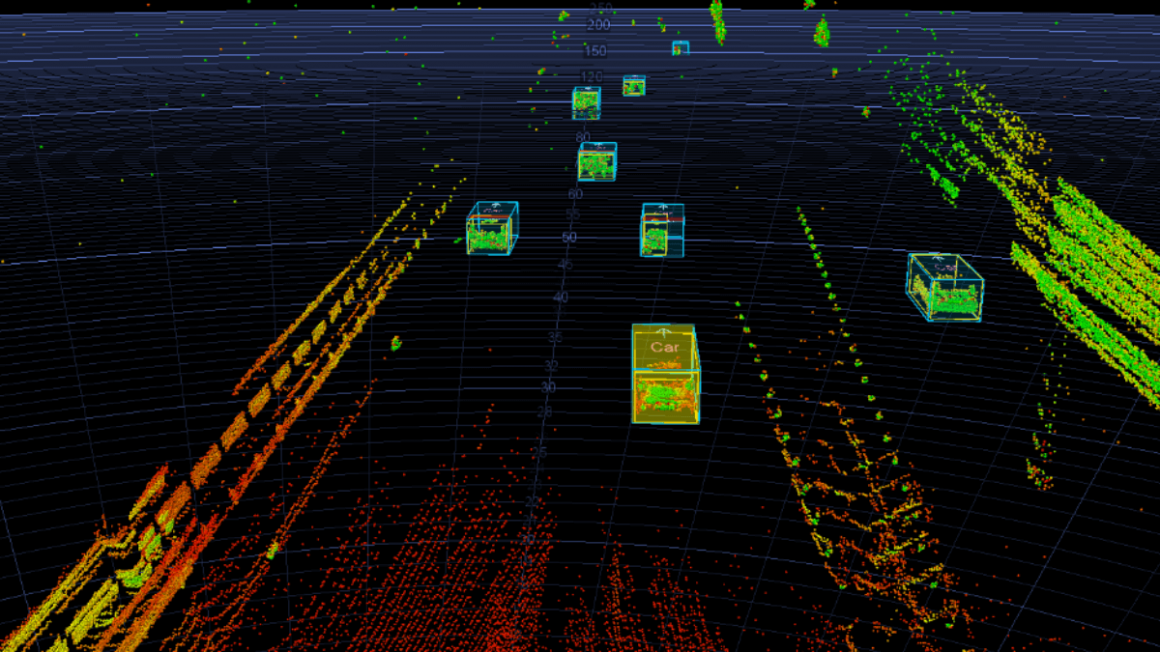Subscribe to EDOM TECH Newsletter
2021/10/26
What is Perception and Why Does it Matter?

Author: Avishay Moscovici, VP Software at Innoviz
Much of today’s media spotlight is dominated by pictures of compact, ultra-sleek LiDAR hardware, which is great for LiDAR awareness overall but misses a crucial piece of the puzzle — the powerhouse software that takes LiDAR data and crunches it into scene perception. So, what does Innoviz’s perception software do and what sets one solution apart from the rest?
What does Innoviz’s perception software do?
Innoviz’s perception software is the key to turning raw point-cloud data into LiDAR-based perception outputs. The software leverages the rich, 3D data derived from Innoviz’s LiDAR sensors along with proprietary, state-of-the art AI algorithms to provide detailed and accurate scene information and deliver an automotive-grade (ASIL B) solution to customers. As a final output from this process of collecting and analyzing data, Innoviz’s software enables functions that are crucial to vehicle operation including object detection, classification and tracking, obstacle detection and classification, and drivable area estimation. The LiDAR perception information adds a layer of real-world knowledge to the vehicle, which translates to improved awareness of the surrounding conditions and contributes to the overall vehicle safety. Most importantly, this expanded awareness greatly enhances a vehicle’s ability to operate under diverse and fast-changing driving conditions.
More specifically, perception software is used for road users’ detection, classification and tracking of landmarks such as utility poles, buildings, bridges, etc. for map-based localization. LiDAR perception outputs can stand alone to provide functional safety perception, but can also be integrated with the vehicle’s existing perception stack at different levels to support various sensor fusion architectures.
What makes a LiDAR software solution unique?
LiDAR software can vary greatly in quality and capabilities, and it’s important to be able to spot the winning technology out of a lineup. When looking for effective perception software, pay attention to three key factors: performance, reliability and use of hardware resources. Below, we’ve run through how our team approaches each of these criteria.
Innoviz’s perception software development processes go hand in hand with comprehensive real-world data collection efforts, designed to capture the complexity and richness of real-life driving. The software is tested and validated under challenging conditions such as extreme weather, a gauntlet of staged obstacles, and even simulated edge cases like unexpected pedestrians near highways or unpredictable two-wheeler (motorcycle and bicycle) maneuvers.
These allow us to reach the needed goals for our automotive customers, such as:
- Detecting, classifying and tracking notable road users, up to 240 meters away, with high True Positive rates.
- Reporting obstacles, including those that are very small, on the drivable area with unmatched False Negative rates.
Innoviz’s perception software has been developed, engineered and tested to meet the stringent ASIL B(D) and ASPICE Level 2 criteria. Because of this, our perception software uniquely meets the high performance and reliability required to enable autonomous driving with the ease of a turnkey LiDAR hardware and software solution.
Our team designs all aspects of our technology to be extremely resource-efficient, and that shines through in our perception software. The software requires little compute power with respect to the amount of information received by the point cloud and can run off of a small automotive-grade chip or take a small portion out of a larger SoC. This major achievement — delivering high-performing, automotive-grade perception software on a small processing footprint –is a key differentiator against competing products. Our advanced perception software together with the LiDAR hardware offering ultimately allows customers to secure a high-performance, holistic solution to meet their specific needs.
Due to Innoviz LiDAR’s unmatched performance coupled with our meticulously developed and validated perception software, our system leads all products in its field with high-quality imagery, scene perception, reliability and use of hardware resources.
Why does Innoviz create both hardware and software?
Innoviz has decided to create its own software solution on top of the hardware solution to remove all barriers to adoption and innovation of LiDAR technology. We know the value of high-quality LiDAR imagery, and want to make access to our solution as hassle-free and streamlined as possible.
Perception software is a practical barrier to entry to many companies that are developing LiDAR technology. It takes a very long time to develop and validate, and for many providers seeking ADAS, L2 and L3 autonomy, it does not make economic sense to create this software on their own. Because Innoviz’s software has already undergone the development and rigorous tests required for automotive-grade product validation, it offers customers pursuing lower-level autonomy a turnkey solution.
We’re confident that using our LiDAR system together with its complementary perception stack, we’ll be able to reach mass production quickly and bring more new, LiDAR-powered solutions to market.
Article Source: Innoviz Blog (https://innoviz.tech/blog/what-is-perception-and-why-does-it-matter)






